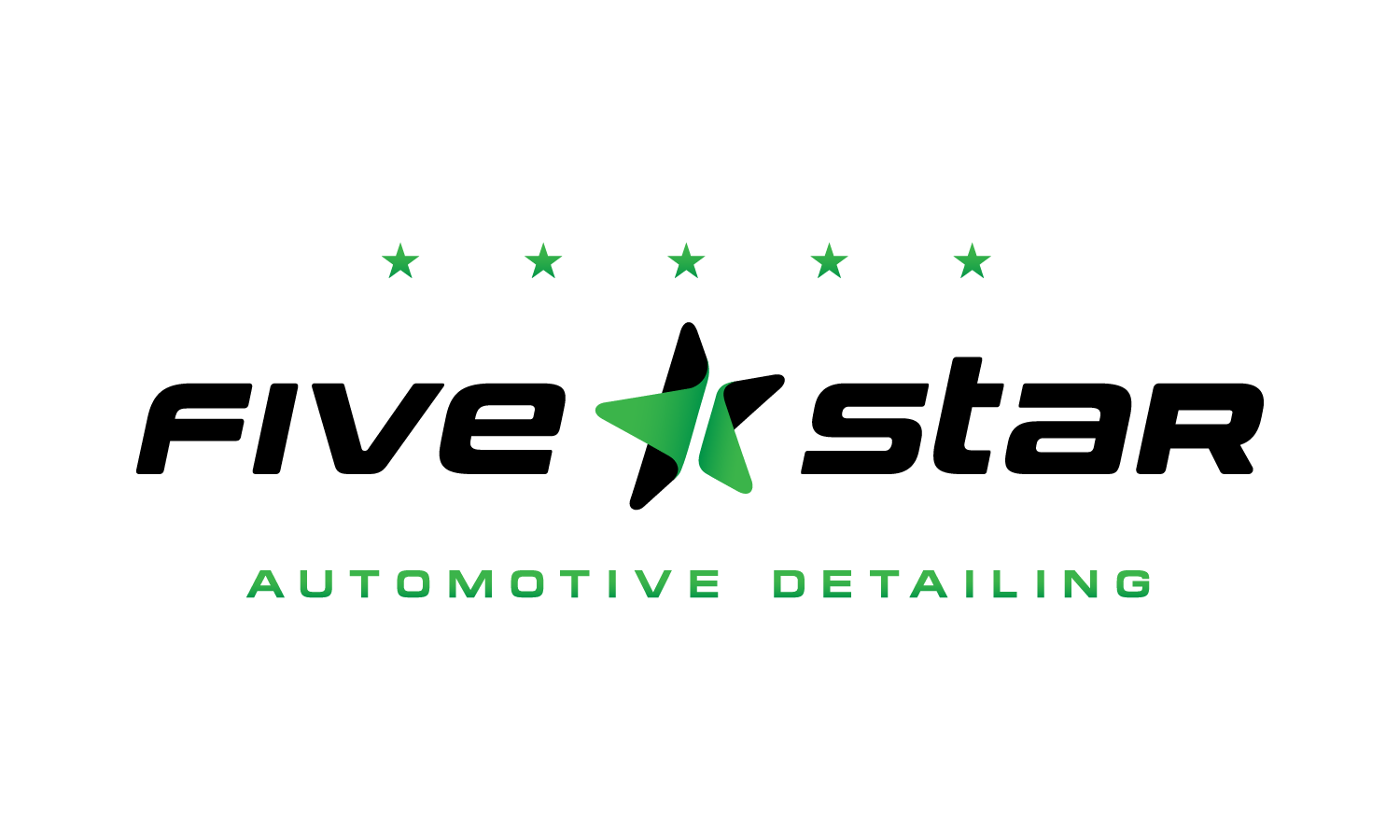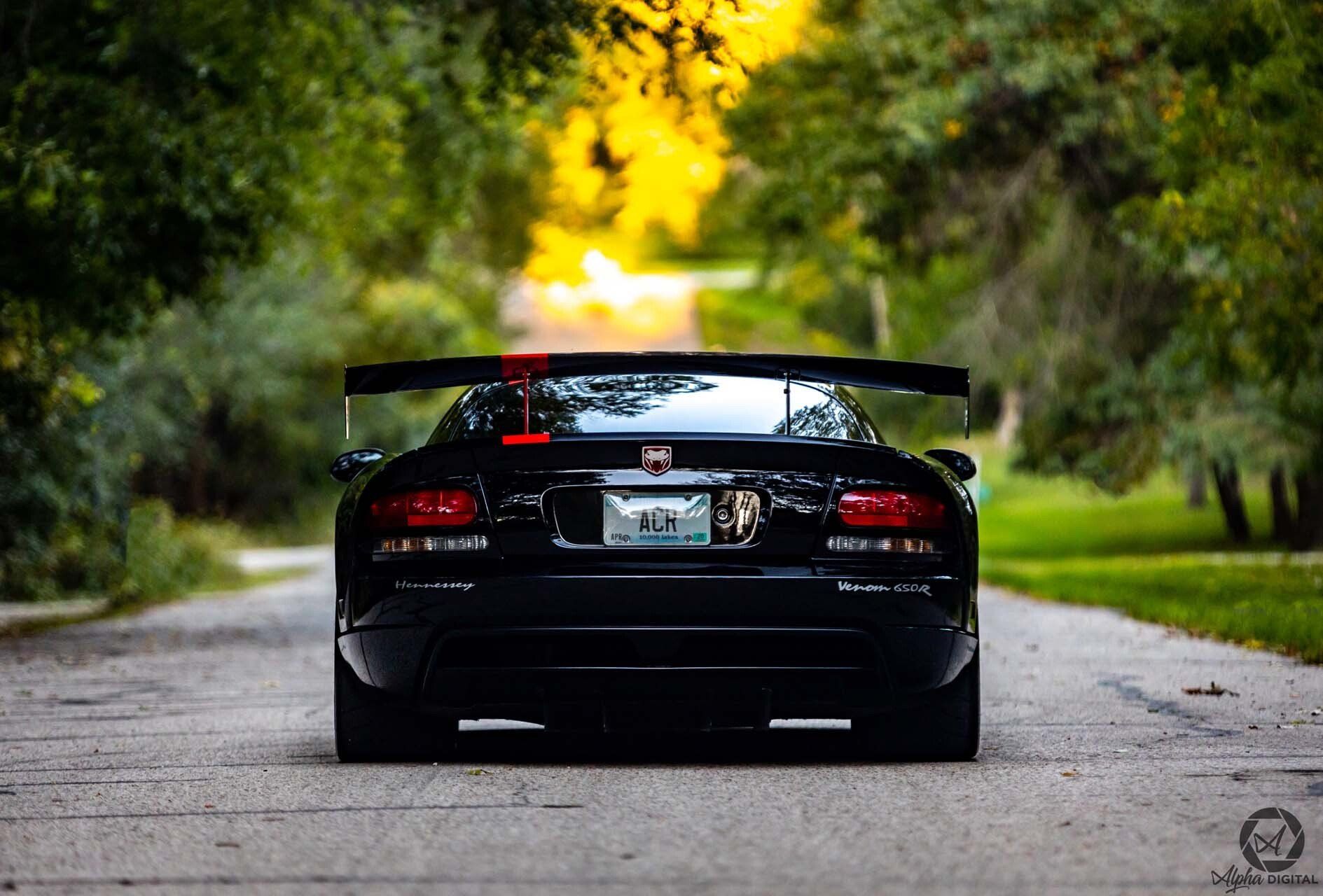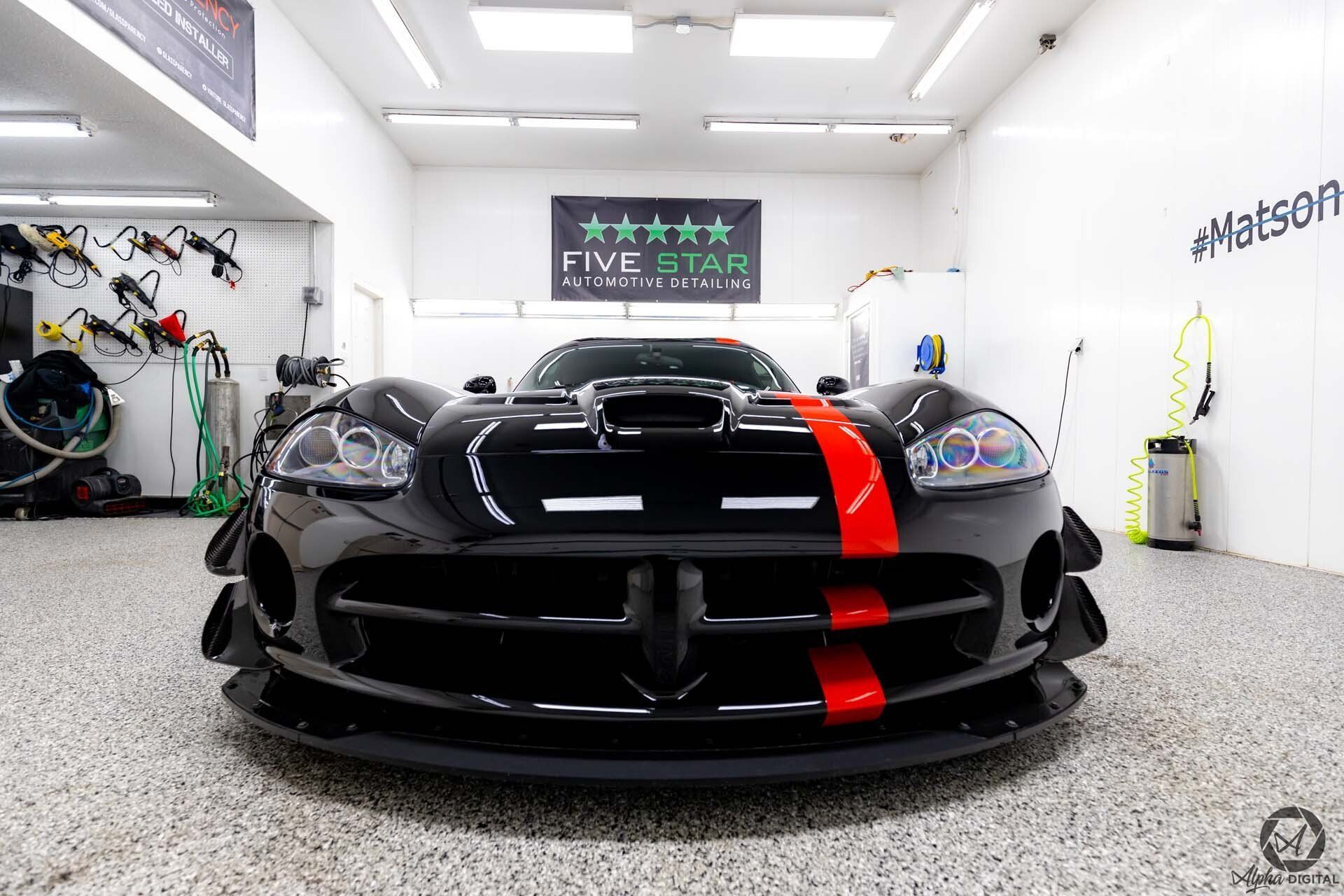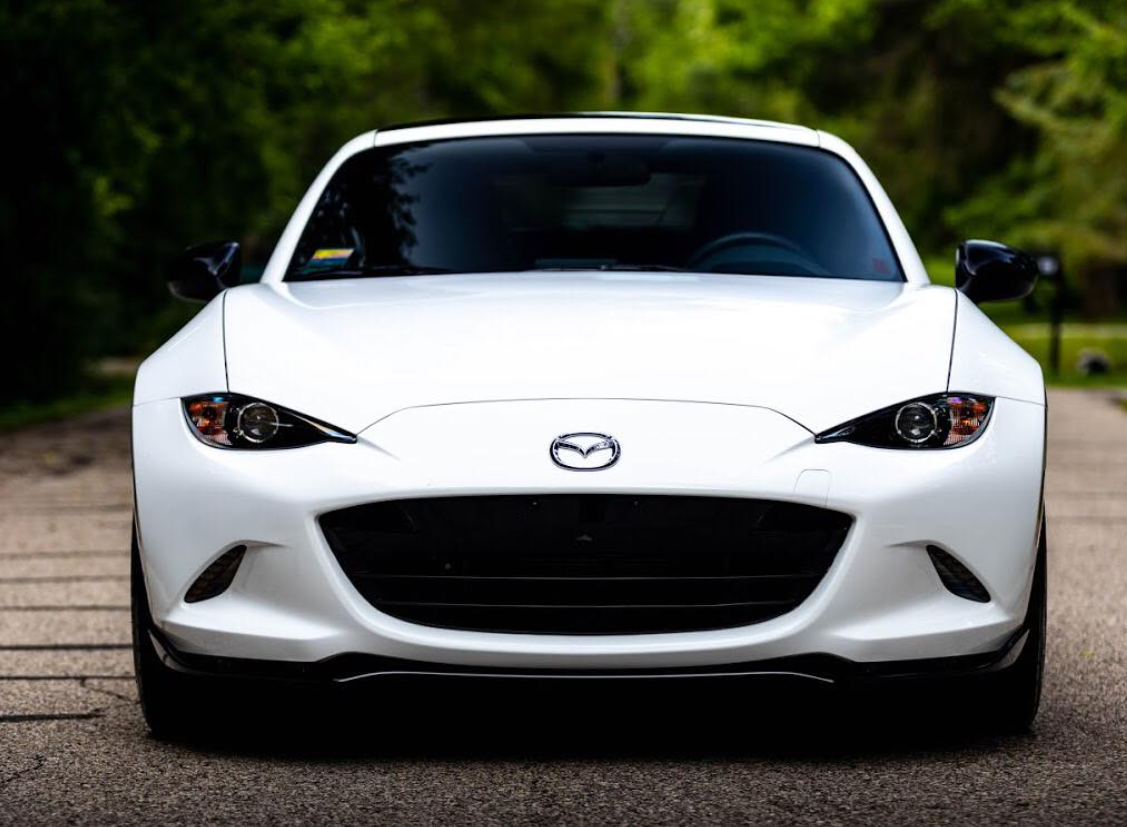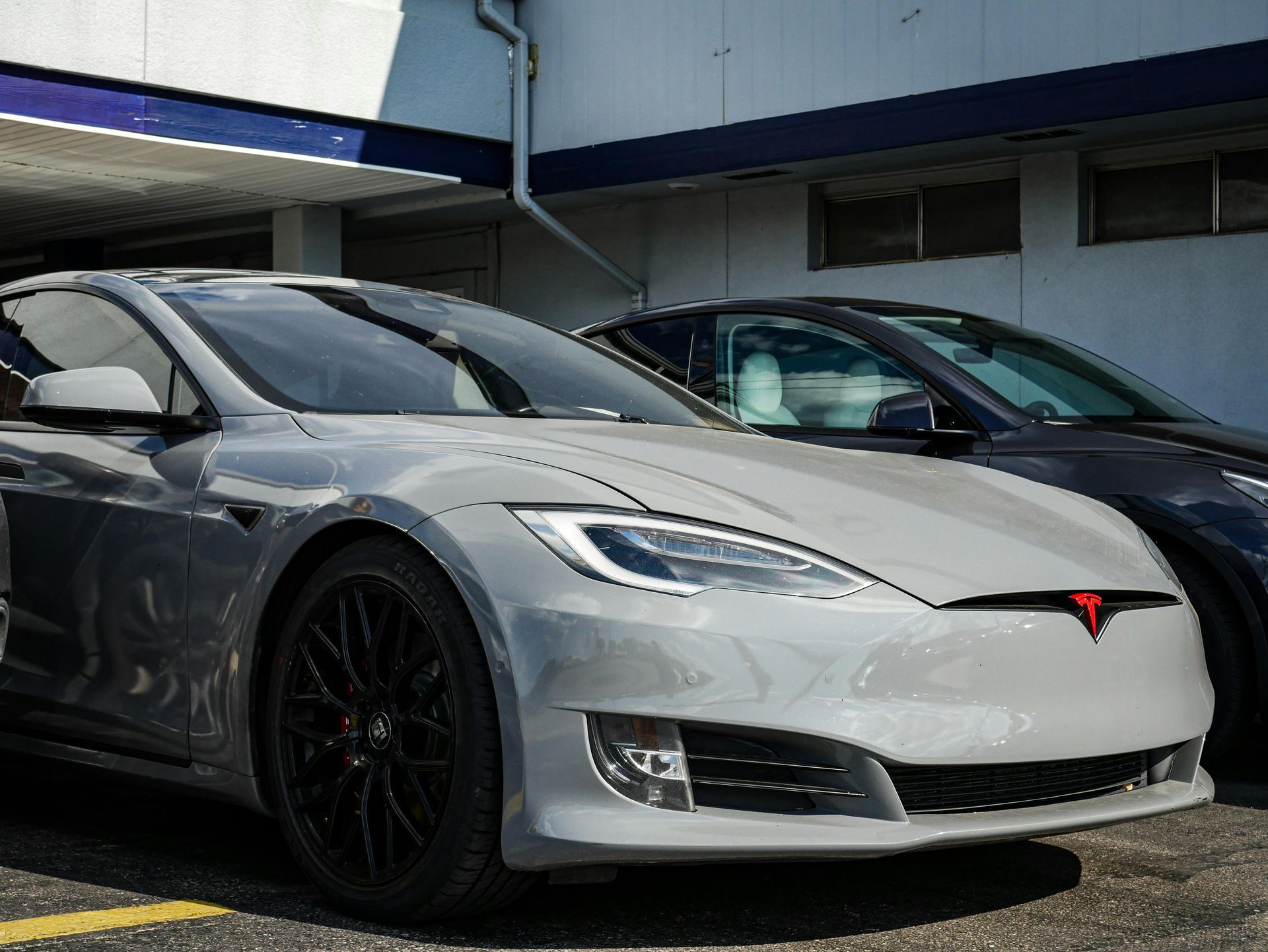Are you pondering how to boost your car’s resale value without compromising its classic charm? You’re not alone. Car enthusiasts often grapple with this question, balancing the desire for long-term paint protection against investment costs. Ceramic coating might be your secret weapon. It integrates with your vehicle’s factory paint, offering a hydrophobic shield that repels contaminants and preserves that showroom shine.
Ceramic coating can positively impact the resale value of a vehicle by maintaining its exterior appearance and protecting it from environmental damage, which can signal to potential buyers that the car has been well cared for. While opinions may vary among car owners regarding the extent of this impact, vehicles with ceramic coatings often sell at a premium due to their enhanced protection and reduced maintenance needs.
How Ceramic Coating Works
When you apply ceramic coating to your vehicle, you're not just slapping on a shiny exterior layer; you're introducing a sophisticated protective technology that significantly enhances the vehicle's resilience. This protective layer forms through a chemical bond between the coating and the factory paint, which means it doesn't just rest atop the surface but actually integrates with the paint itself. At its core, ceramic coating typically comprises powerful ingredients like silicon dioxide (SiO2) or titanium dioxide (TiO2). When exposed to heat, these components react and create a durable nano-ceramic shield.
As this nano-ceramic shield forms, it generates a hydrophobic surface that deflects water, dirt, and other environmental contaminants. Picture it like a tightly woven fabric: water beads off rather than soaking in. This is more than a mere aesthetic enhancement. It significantly reduces the frequency of necessary washes and minimizes grime buildup on the vehicle body. One of the standout features of ceramic coatings is how they behave over time. Unlike traditional waxes or sealants that primarily create a soft layer on top of the paint, ceramic coatings offer a long-lasting sacrificial barrier against environmental threats such as UV rays, acid rain, bird droppings, and road grime. This characteristic preserves not only the color and finish of your vehicle but also its overall integrity.
The true efficacy of ceramic coating lies in its ability to withstand various elements while maintaining that pristine look you initially fell in love with. Most importantly, applying ceramic coating is not simply about enhancing shine or environmental damage resistance; it's an investment in keeping your car looking new longer and maintaining its resale value. By protecting against oxidation and fading, you are essentially preserving the car’s original appearance for years to come!
Enhancing Vehicle Longevity and Appearance
Ceramic coatings excel at preserving a vehicle's original condition, effectively enhancing its longevity and overall appearance. One of the standout features is their hydrophobic properties, which create a barrier that makes it significantly more challenging for contaminants to stick to the surface. This means dirt, spills, and grime are far less likely to settle in, leaving your car looking immaculate with less effort. Picture rain hitting your vehicle; instead of dirty water pooling and leaving unsightly marks, it simply beads up and rolls away, taking that troublesome dirt with it. This simple reaction can drastically reduce the risk of water spots forming, which otherwise can lead to etching and rust over time.
Not only do ceramic coatings fight off moisture, but they also provide excellent ultraviolet protection. Ultraviolet rays from the sun can severely damage a vehicle's paintwork, causing it to fade or oxidize over time. However, when you have a ceramic coating applied, this protective layer helps maintain that vibrant color you loved when you first bought the car. It truly allows your vehicle to stand out long after you've driven it off the lot. Imagine pulling up to a gathering—your car shines brilliantly under the sun while others around you show signs of sun damage or fading paint.
Another major benefit of ceramic coatings is the significant reduction in maintenance work required. You might find yourself washing your car less frequently because of how easy it is to keep clean; contaminants are simply unable to adhere to the surface as they used to. A quick rinse and wipedown will often suffice to make the car look refreshed again. This translates into saved time and money on regular detailing services—the coating pays for itself with reduced upkeep costs. Studies also suggest that vehicles with ceramic coatings can retain their aesthetic appeal longer than those without any protective treatments, potentially boosting resale values by 10-15%.
Investing in a ceramic coating isn't merely about aesthetics; it's also about financial prudence. By protecting your vehicle from wear and tear as well as environmental factors like UV rays and moisture, you're setting up your car for better resale prospects down the line. Buyers are often drawn to vehicles that look well-maintained and cared for—features that good customer service often transforms into real cash at selling time. Considering the correlation between maintenance and market value highlights why many enthusiasts are turning toward protective options that can secure their investment into the future.
Financial Impact on Resale Value
Understanding the financial implications of ceramic coating is essential for any vehicle owner looking to enhance their investment. Vehicles treated with ceramic coatings generally present a more appealing exterior, which is critical in a market where first impressions can dictate buyer interest. When potential buyers see a car that shines brightly and exhibits minimal wear, they are more likely to perceive it as being well-maintained, translating directly into higher offers.
The idea of maintaining a vehicle’s aesthetic appeal aligns with the broader psychological factors influencing buyer behavior. Studies indicate that buyers often associate the appearance of a vehicle with its overall value. A glossy, vibrant finish suggests not only that the car has been cared for but also that it might require fewer repairs down the line. Buyers are comforted knowing that there won’t be hidden costs associated with paint correction or deep cleaning—factors that can typically escalate quickly. Investing in ceramic coating can yield an impressive return when it comes time to sell your vehicle.
More than just physical appeal, ceramic coating provides practical benefits that contribute to its financial value. For instance, vehicles treated with this protective layer are less susceptible to environmental damage, such as oxidation from UV rays or etching from bird droppings and tree sap. These advantages mean that owners may need to invest less money into repairs and maintenance over the lifespan of the vehicle. When it comes time to sell, this lack of wear makes the car more attractive to potential buyers and can encourage them to pay a premium.
Additionally, consider the broader market dynamics at play. As consumer awareness grows regarding automotive care products like ceramic coatings, buyers are increasingly seeking out vehicles specifically marketed as protected or coated. In fact, those with ceramic coatings are often perceived as luxury cars—even when they're not—due to their enhanced protection and curb appeal. This growing trend can have a ripple effect on reselling values across different models and brands. With these trends in mind, it becomes clear how crucial it is to understand how buyer perceptions shape market dynamics.
Buyer Perception and Market Appeal
When it comes to selling a vehicle, buyer perception plays a pivotal role. A ceramic-coated vehicle often stands out in a crowded market, as many potential purchasers view it as one that has been lovingly maintained. This is essential because most buyers are looking for value; they want to invest in a car that reflects durability and care. In fact, having a gloss finish not only enhances aesthetic appeal but also creates the impression of quality.
One common sentiment among buyers is that a car with ceramic coating has likely received better overall treatment compared to others. Many may express thoughts like, “If the owner cared enough to have the car ceramic coated, they probably took care of other aspects too.” This belief translates into a higher perceived value during negotiations. However, perceptions aren't always positive. Not all buyers see ceramic coatings as an absolute positive; some may express skepticism about their true value. Hence, transparency becomes crucial—providing documentation, such as maintenance records or proof of detailing services performed post-coating, can help assuage these concerns.
By doing so, sellers strengthen buyer confidence; it reassures them that their investment is indeed worthwhile. Knowledge is power, after all, and when buyers have access to comprehensive information about how the coating benefits the vehicle long-term—including protection against environmental damage—their willingness to pay more increases significantly.
Investment Considerations
When it comes to ceramic coating, understanding its long-term value is crucial. While the initial cost may seem daunting—ranging from a mere $150 for DIY kits to upwards of $2,500 for professional services—what you’re really purchasing is peace of mind along with tangible benefits that can alter the entire experience of owning a vehicle. For instance, consider the longevity of the product; a DIY application might last up to one year at best, while professional installations can endure anywhere from five to ten years. The difference in durability does not merely justify the price tag but often transforms your vehicle's maintenance routine altogether.
A deeper look into the application skill required offers insight into your choices. A DIY kit may attract those who enjoy hands-on projects or want to save money. However, it's essential to acknowledge that successful application requires moderate to high skill. Mistakes during this process can lead to uneven coatings or even damage to your paintwork, which could result in more expenses down the line. On the other hand, hiring professionals ensures an expert touch, potentially saving you headaches later. Professional services often come with warranties ranging from five to ten years, effectively covering you against premature wear and atmospheric impacts that could devastate lesser applications.
Then there’s also the aspect of resale value, an important consideration for many vehicle owners. Vehicles treated with ceramic coatings commonly command higher resale prices because prospective buyers often recognize the benefits of protected paint jobs and the associated upkeep. Buyers are increasingly discerning; they are drawn to vehicles that reflect care and maintenance. In fact, studies have shown that well-maintained cars tend to hold their value better than others—which makes investing in ceramic coating not just a choice but a strategic financial decision as well.
Comparing Protection Methods
When weighing the options for protecting your vehicle's exterior, understanding the differences between ceramic coating, wax, and paint protection films is vital.
Wax, while commonly used, typically provides only a temporary measure of gloss and barrier against environmental elements. After a few washes or exposure to the sun, its effectiveness diminishes significantly, often requiring reapplication every few weeks. This short-lived protection can feel like a constant cycle of maintenance and may not suit those who seek long-term solutions. On the other hand, paint protection film offers a more robust safeguard against physical damage such as rock chips and scratches. This clear film adheres closely to your car’s surface, acting as a shield against external threats. However, this layer of protection comes at a cost—often several hundreds to thousands of dollars—making it a substantial investment that may not align with every owner's budget.
Ceramic coating emerges as an appealing alternative because it blends durability, aesthetic appeal, and cost-effectiveness into one package. While ceramic coatings typically range from about $500 to $2,000 based on the quality and professional application, they offer resilience that surpasses traditional waxing. The key advantage lies in its hydrophobic properties, which repel water and dirt while enhancing your vehicle's shine. Ultimately, the decision hinges on personal priorities. For those seeking ease and simplicity without breaking the bank, wax might still be an option—albeit a less favorable one for long-term use. Conversely, if rock chip damage is a major concern and budget allows for it, a paint protection film could ensure peace of mind without compromising aesthetics.
Understanding whether you prefer ongoing maintenance or are willing to invest upfront for lasting results will guide you toward the most suitable protection method tailored to your needs. As you evaluate these different approaches to car protection, consider both practical benefits and financial implications before deciding which technique best preserves your vehicle's appearance over time. Each method offers unique advantages depending on your needs and budget. Choosing the right protection is key to ensuring your vehicle retains its value and appeal for years to come.
Exceptional Ceramic Coating Services in Rochester, MN
Transform your vehicle’s appearance and protection with Five Star Automotive Detailing’s exceptional ceramic coating services in Rochester, MN. Our skilled team uses cutting-edge technology and premium products to deliver a durable, high-gloss finish that resists environmental damage and enhances your car’s shine. Trust us to provide top-tier ceramic coating that keeps your vehicle looking pristine and protected. Schedule your appointment today and experience the unparalleled quality that sets us apart. Call us at 507-213-3561 to get started!
